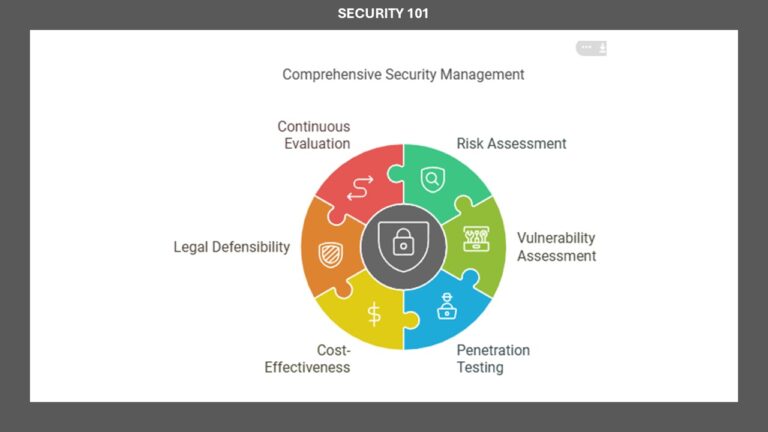Security 101
Security is an element of business management rather than only an IT concern. Furthermore, IT and security are different. Information technology (IT) or even information systems (IS) is the hardware and software that support the operations or functions of a business. Security is the business management tool that ensures the reliable and protected operation of IT/IS. Security exists to support the organization’s objectives, mission, and goals.
Generally, a security framework that provides a starting point for implementing security should be adopted. Once security is initiated, fine-tuning that security is accomplished through continuous evaluation and stress testing. There are three common types of security evaluation: risk assessment, vulnerability assessment, and penetration testing.
Risk assessment is identifying assets, threats, and vulnerabilities to calculate risk. Once risk is understood, it is used to guide the improvement of the existing security infrastructure. Vulnerability assessment uses automated tools to locate known security weaknesses, which can be addressed by adding more defenses or adjusting the current protections. Penetration testing uses trusted teams to stress-test the security infrastructure to find issues that may not be discovered by the prior two means and to find those concerns before an adversary takes advantage of them. Security should be cost-effective.
Organizations do not have infinite budgets and, thus, must allocate their funds appropriately. Additionally, an organizational budget includes a percentage of monies dedicated to security, just as most other business tasks and processes require capital, not to mention payments to employees, insurance, retirement, etc. You should select security controls that provide the most significant protection for the lowest resource cost .
Security should be legally defensible. The laws of your jurisdiction are the backstop of organizational security. When someone intrudes into your environment and breaches security, especially when such activities are illegal, prosecution in court may be the only available response for compensation or closure. Also, many decisions made by an organization will have legal liability issues. If required to defend a security action in the courtroom, legally supported security will go a long way toward protecting your organization from facing significant fines, penalties, or charges of negligence.
Security is a journey, not a finish line. It is not a process that will ever be concluded. It is impossible to fully secure something because security issues are always changing. Our deployed technology is changing with the passage of time, by users’ activities, and by adversaries discovering flaws and developing exploits. The defenses that were sufficient yesterday may not be sufficient tomorrow. As new vulnerabilities are discovered, new means of attack are crafted, and new exploits are built, we have to respond by reassessing our security infrastructure and responding appropriately.




